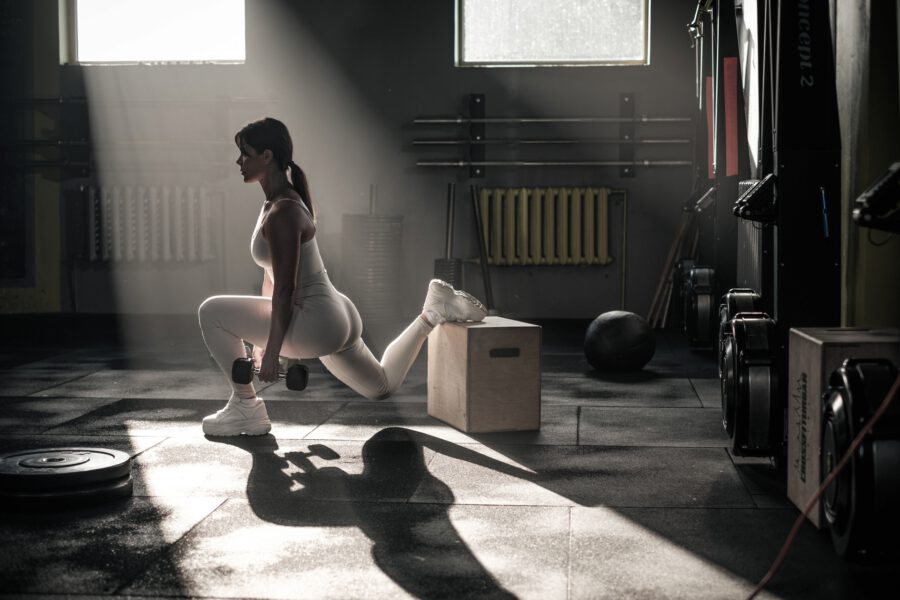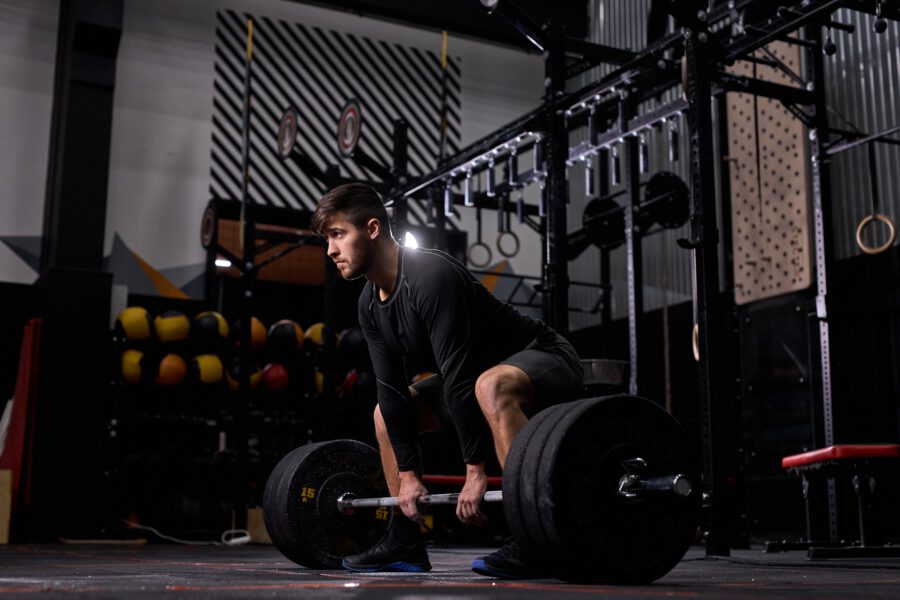Bulletproof Your Knees: Knee Exercises For Pain and Strength
The knee is one of the most critical structures in the body. It allows you to stand, move, and maintain your balance. Strong knee muscles and joints allow athletes to compete at peak performance– lifting heavy, changing direction quickly, jumping higher, and many more!
However, it is also the most easily injured and neglected joint in the body, with about 41% of all sports injuries. Knee injuries can be devastating and prevent you from doing sports and other activities you love.
This article will discuss the best knee exercises for strength and injury prevention to optimize your training routine.
The knee is a complex structure that provides stability and mobility to your lower body. It connects your thigh and leg and allows bending motions of the leg.
The major muscles of the quads, hamstrings, and calves surround the knee joint and work together to generate powerful contractions for various movements such as kicking, climbing, lifting, and more.
Weak quads, hamstrings, or muscle imbalance around the knee are linked to an increased risk of injuries, particularly in running sports and weightlifting.
To bulletproof your knees and improve your athletic performance, you must include proper strengthening, stretching, and mobility exercises in your routine.
Weight lifters often suffer from nagging knee discomfort. Even worse, they may develop full-blown knee injuries due to improper exercise techniques, wear and tear, or overtraining.
Pain is a signal from your body that there's something wrong that you need to address. But, unfortunately, pain also often comes and goes and is often overlooked. That's why it is crucial to always listen to your body when engaging in physical activity.
Most knee pain is caused by muscles or joints above or below the knee joint. For example, knee discomfort can be caused by weak glutes or hip imbalances. In some cases, a stiff ankle or improper footwear can lead to overworking of knee muscles.
If your ankle can't move optimally, excess forces are shifted on the knee joint. As a result, the knee may be forced to compensate to flex, rotate, or tilt more than it should. That's why adequate ankle mobility is crucial for healthy knee joint function.
How to do it:
- Kneel on one leg so that you are in a 90-90 lunging position
- Straighten your hip and face forward
- Drag your knee forward to toes, shift your weight forward slowly
- Hold for 6 seconds, and move back to the starting position
- Repeat for 10 to 15 reps and do it on the other side
Activating your quad muscle is also effective in decreasing knee pain and preventing discomfort.
How to do it:
- Place a block or towel roll under the heel.
- Push down the back of the knee toward the floor
- Hold this position for 6 seconds, then return to the starting position
- Repeat for 10 to 15 reps, then do it on the other side
This exercise works the glutes, hamstrings, and inner thighs, strengthening and stabilizing the knee.
How to do it:
- Lie flat on the floor or mat
- Bend your knees and place a ball or yoga block in between them
- Engage your core and raise your hips on the floor
- As you raise your hips, squeeze the ball
- Hold the position for 6 seconds
- Repeat for 10 to 15 reps
Most knee pain is caused by weak gluteus medius due to abnormal inward pull on the knee. Strengthening the glutes improves hip and thigh positioning, which reduces the impact on the knee joint and knee cap.
How to do it:
- Lie down on your side, keeping the top leg straight and the bottom leg bent
- Keep your hips steady and engage your core
- Slowly lift the top leg up
- Hold for 6 seconds, then slowly move to the starting position
- Repeat for 10 to 15 reps, then do it on the other side
This exercise is an excellent warm-up routine to activate the hip's internal and external rotators. Adequate hip mobility allows you to perform lower body exercises with a good range of motion and prevent the knees from being compromised.
How to do it:
- Stand straight
- Place your feet shoulder-width apart
- Lift your left leg so that it is 90 degrees with your hips
- Rotate your leg outward, then rotate back inward
- Repeat for 10 to 20 reps
- Do it on the other side
Here’s a training plan you should try:
Strong quads, hamstrings, glutes, and calves muscles are crucial in maintaining a proper load distribution around the knee.
The goblet squat is an excellent variation of the traditional squat, targeting the quads, hamstrings, glutes, and core.
This exercise teaches beginners the proper form of squats and encourages a more upright posture during the lift.
How to do it:
- Start with your feet shoulder-width apart
- Keep your hip and toes steady and straight ahead
- Bend on your knees while keeping your back straight
- Lower yourself into a squat
- Squeeze your glutes
- Return to the starting position
- Repeat for 10 to 15 reps
One of the most neglected lower body muscles is the calf. Performing calf leg press allows you to develop and strengthen your calf muscles, preventing muscle imbalance around the knee.
How to do it:
- Position yourself in a leg press machine
- Place your feet so that your heels are on the end of the foot pads
- Slowly press the ball of your foot against the pads
- Feel the contraction of your calves
- Do this for 10 to 15 reps
This exercise primarily targets the hamstrings while activating the glutes and core muscles. Studies show that weak hamstrings can increase the risk of developing ACL injuries in athletes.
How to do it:
- Lie on your back
- Bend your knees
- Lift your feet while keeping your heels on the floor
- Gently lift your hips and engage your core
- Hold for 6 seconds,
- Return to the starting position
- Repeat for 10 to 15 reps
Tibialis anterior is the straight, lean muscle in front of your leg. Strengthening the tibialis can improve your balance and coordination in the ankle and improve knee health.
How to do it:
- Lean your back into a wall
- Place feet slightly in front of you
- Gently raise your feet without lifting your heel
- Hold for 2-3 seconds
- Return to the starting position
- Do this for 15 to 20 reps
If you are suffering or recovering from a knee injury, it is always best to exercise with a physiotherapist or professional coach's guidance to ensure optimal recovery.
Remember that pain is not always equal to gain. Listening to your body and giving your body enough time to heal is more important than risking reinjuring yourself. The path to fitness is a marathon, not a sprint.
The knee is one of the most crucial structures in your body, especially when you are into sports or lifting. Proper mobility and strengthening exercises are essential for maintaining strong and healthy knees to optimize athletic performance and prevent injuries.

